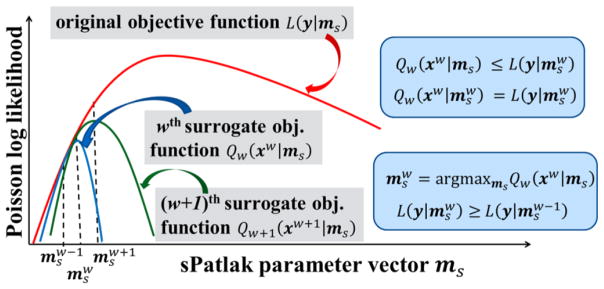Figure 3.
(left) Diagram of ML-EM global objective function L (red curve) and surrogate functions Qw (blue) and Qw+1 (green) for global iterations w and w + 1, respectively. They all are Poisson log-likelihood functions depending on the sPatlak parameter vector ms. The basic principles of optimization transfer are illustrated as follows: (a) Each value of the w-th surrogate function is either lower or equal to the value of the global objective function at the same ms. In addition, (b) the maximum value of w-th surrogate function is equal to the value of the global function at . The set of parameters maximizing the w-th surrogate objective function is considered the optimal for w-th iteration, as described in (c). Finally, yields higher values for the global objective function, as the iterations progress (d).

